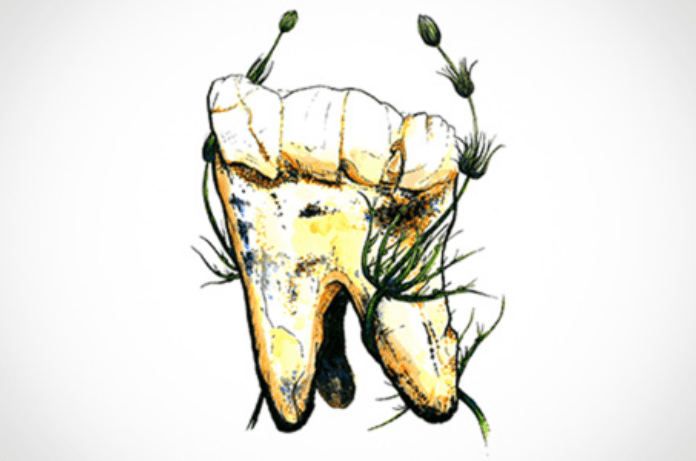Countless factors have shaped human evolution, but one key milestone was when our ancestors started eating meat. This shift to a high-protein diet likely led to larger brains and the creation of advanced tools. However, scientists have long struggled to determine when meat became a staple in the diet of our prehistoric ancestors. A new study by researchers from Wits University in South Africa and the Max Planck Institute for Chemistry in Germany sheds light on this fascinating Australopithecus diet.
A Peek Into Our Past: The Australopithecus Diet
The study examined the Australopithecus genus, early human ancestors who lived in southern Africa 3.7 to 3.3 million years ago. These hominins inhabited the “Cradle of Humankind,” a UNESCO World Heritage Site renowned for its abundant fossils.
To uncover details about their diet, the research team examined stable isotope data from the fossilized tooth enamel of Australopithecus individuals found in the Sterkfontein Caves near Johannesburg. Teeth, it turns out, are nature’s time capsules. The tooth enamel of mammals preserves chemical signatures of their diet, even after millions of years.
The team compared the isotopic data from Australopithecus teeth to that of animals like antelopes, monkeys, and predators such as big cats and hyenas, which lived during the same period. The results were surprising: Australopithecus primarily consumed plants, with little to no evidence of significant meat consumption.
How Did Scientists Find Out?
The research was led by Dr. Tina Ludecke, a geochemist and Honorary Research Fellow at Wits University. She is also the head of the Emmy Noether Junior Research Group for Hominin Meat Consumption at the Max Planck Institute for Chemistry in Germany.
Dr. Ludecke and her team used a groundbreaking method to measure nitrogen isotopes in fossilized tooth enamel. Here’s how it works:
- Biological processes during digestion prefer the “light” nitrogen isotope (14N).
- As animals excrete 14N through sweat, urine, and feces, their bodies retain a higher proportion of “heavy” nitrogen isotope (15N).
- This creates a ratio of 15N to 14N, which increases the food chain. For example, predators have a higher 15N ratio than their herbivorous prey.
By analyzing these ratios, scientists can estimate an organism’s position in the food chain. While this method has been used for tens of thousands of years on organic materials like bones and hair, applying it to fossilized tooth enamel and millions of years old, was a revolutionary step.
What Did They Find?
The nitrogen isotope ratios in Australopithecus tooth enamel were consistently low, similar to herbivores, and much lower than modern carnivores. This suggests that their diet was mostly plant-based, though occasional consumption of animal protein, like termites or eggs, cannot be completely ruled out.
Unlike Neanderthals, who hunted large animals regularly, Australopithecus likely relied on fruits, leaves, seeds, and other plant-based foods. The study’s findings challenge the notion that meat played a central role in the early stages of human evolution.
Why Is This Important?
Understanding the diet of our ancestors is crucial for answering larger questions about human evolution. For instance:
- When did humans start eating meat?
- Did meat consumption lead to larger brains and advanced tools?
- Did it give our ancestors a competitive edge over other species?
These questions remain open, but studies like this bring us closer to finding answers.
Dr. Alfredo Martinez-Garcia developed the isotope measurement technique at the Max Planck Institute. He believes this approach could help map the dietary patterns of different hominin species across millions of years. By comparing fossils from eastern and southern Africa, as well as southeast Asia, researchers hope to uncover the origins and evolution of meat consumption.
The Bigger Picture: What It Means for Human Evolution
The findings emphasize that Australopithecus, despite being an important ancestor, was far from the skilled hunters we associate with later hominins like Homo erectus or Neanderthals. Their diet relied on the resources available in their environment. It shows the adaptability but not the reliance on animal protein seen in later periods.
This discovery is particularly significant because it redefines our understanding of the role of diet in shaping early human evolution. While the connection between a meat-based diet and increased brain size remains a strong hypothesis, the study suggests that this transition may have occurred much later than previously thought.
Sterkfontein: A Treasure Trove of Insights
Sterkfontein Caves, where the fossils were found, continue to be a goldmine for scientists. Discovered 89 years ago by Robert Broom, these caves have provided countless insights into our evolutionary history.
Professor Dominic Stratford, the Director of Research at Sterkfontein and co-author of the study, expressed pride in the site’s ongoing contributions to science. “Sterkfontein is still making groundbreaking discoveries, nearly nine decades after it was first explored,” he said.
The research was funded by the Max Planck Society and the German Research Foundation’s (DFG) Emmy Noether program, which supports Dr. Ludecke’s work. His team plans to expand their research by studying fossils from other key regions in Africa and beyond. By gathering more data from various hominin species and time periods, they hope to pinpoint when and how meat consumption became a defining feature of human evolution.
A Step Closer to Understanding Ourselves
The study marks an exciting step forward in unraveling the mysteries of our past. By using cutting-edge techniques, researchers have shown that the diet of Australopithecus was predominantly plant-based, challenging long-held assumptions about the role of meat in early human evolution.
This discovery opens up new possibilities for understanding when our ancestors began eating meat, how it shaped their development, and whether it contributed to their success as a species.

